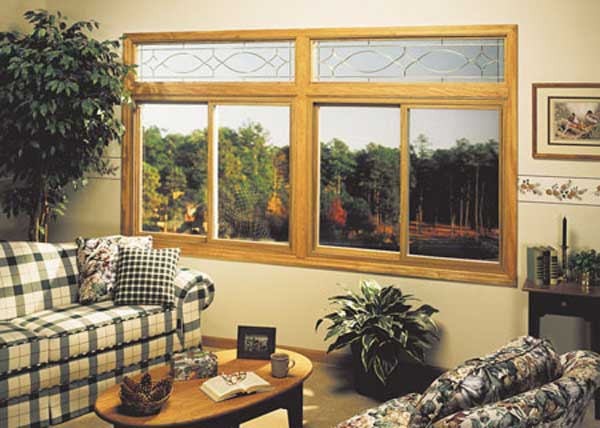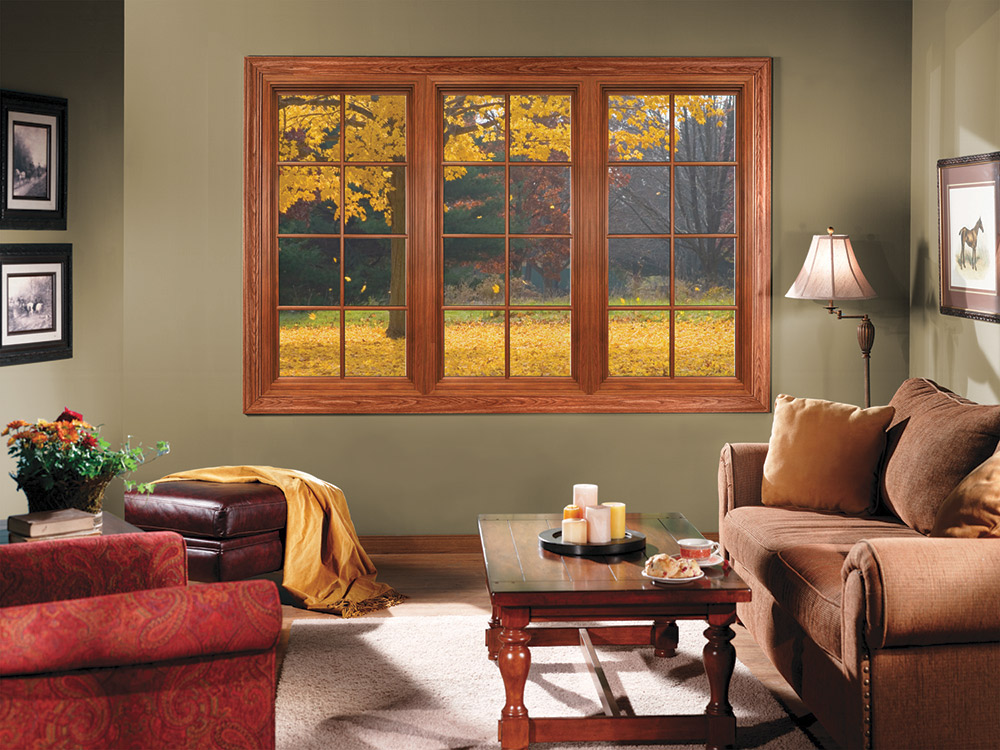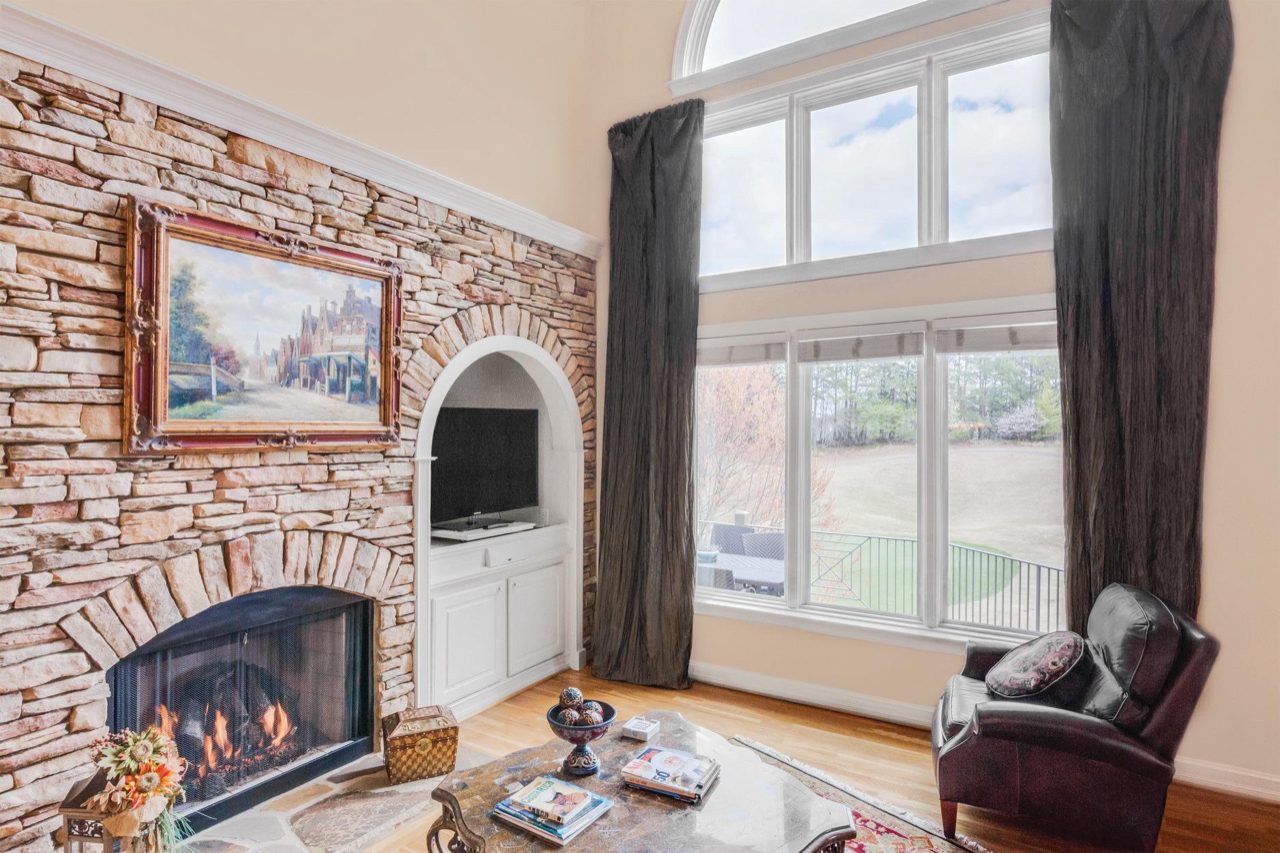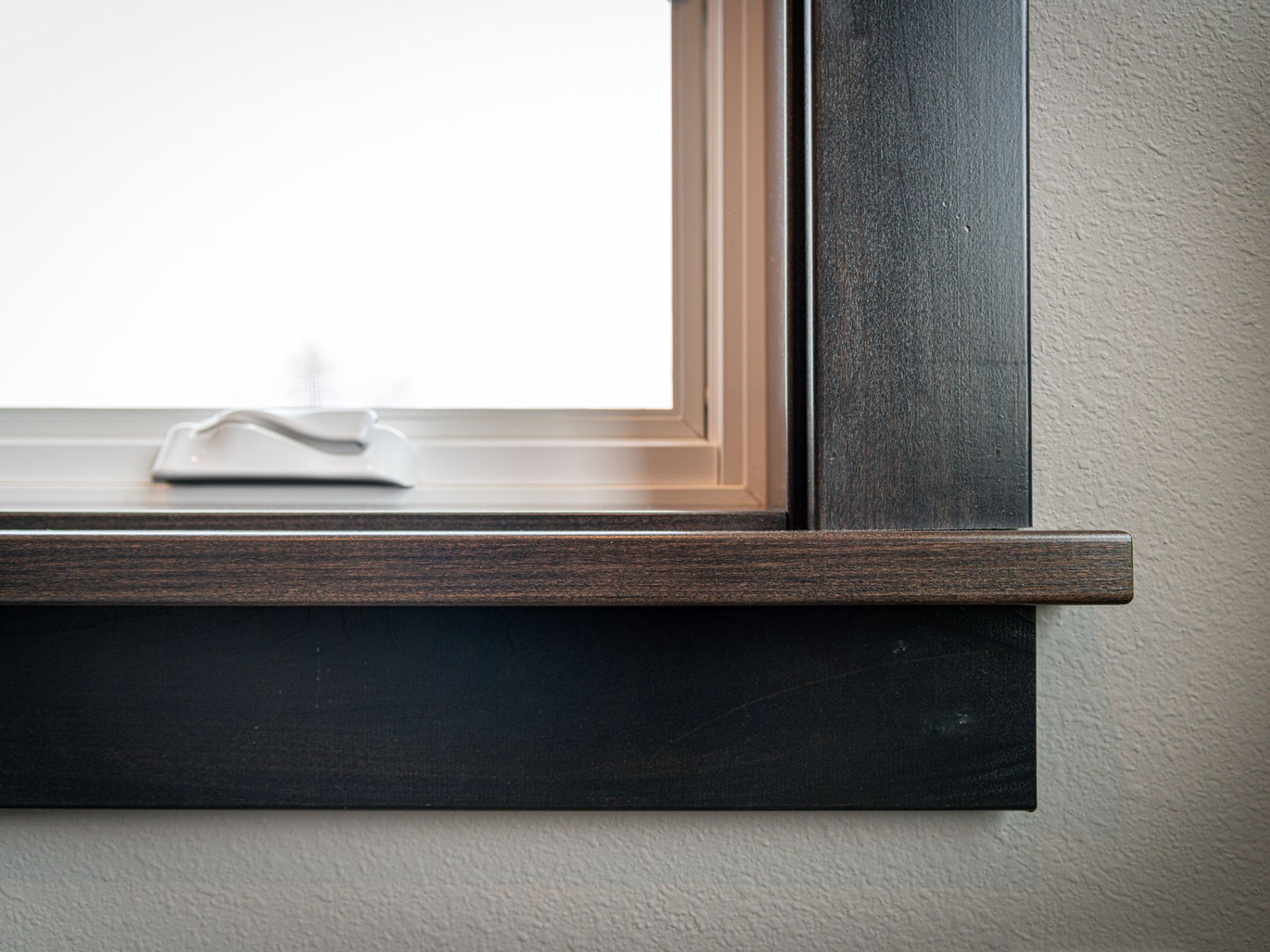When homeowners in eastern Iowa ask us about replacing their windows, the conversation always goes to: “Will it really make a difference in my energy bills?” The short answer? Absolutely—but the how, why, and how much are where things get interesting.
Choose Windows | Savings | Low-E | Custom-Sized | Installation
With hot, muggy summers and cold, windy winters, eastern Iowa homes get hit from both sides of the weather spectrum. If your windows aren’t doing their job, they can be the single biggest reason your home loses energy; up to 30% of your heating and cooling energy, in fact.
This article addresses five of the most frequently asked questions about window energy we receive at Hometown Restyling. Along the way, we’ll share the four real drivers of energy-efficient windows (spoiler: it’s not just the glass).
How to choose the best energy-efficient windows?
Choosing the best energy-efficient windows for your home understanding your environment and how it impacts your windows. Before you get into the energy jargon and ratings, focus first on performance. At Hometown Restyling, we focus on the fundamentals: the 4 Pillars of Energy Efficiency. These four principles help us evaluate and recommend windows that make a difference in comfort and cost savings for your home.
- Air Filtration
- Convection
- Conduction
- Radiation

1. Air Filtration
Air filtration in this context refers to the unintended movement of air through gaps in or around your windows. It’s one of the biggest contributors to heat loss in winter and heat gain in summer, especially in older homes.
Every bit of unwanted airflow means your furnace or air conditioner has to work harder, cycling more frequently to maintain a steady temperature. Over time, that adds up to higher energy bills and greater wear on your HVAC system.
A few things influence how well an energy-efficient window performs in this area:
- Frame materials: Multi-chambered vinyl or fiberglass frames tend to be more airtight than aluminum or low-grade vinyl.
- Sealing systems: Compression seals create a tighter, longer-lasting barrier than basic sliding or brush-type seals.
- Installation quality: Even a top-tier window can leak like a sieve if it’s not installed correctly and sealed around the rough opening.
2. Convection
Convection refers to the cycle of air movement caused by temperature differences. It’s especially noticeable around windows during an Iowa winter. When warm indoor air hits a cold glass surface, that air cools down, becomes denser, and sinks. As it drops, it pulls warmer air toward the window, creating a loop that can make a room feel drafty and uncomfortable, even if no air is actually leaking in.
This air movement is subtle but constant. This causes your heating system to work harder to maintain a consistent temperature. The colder the glass surface, the stronger the convection loop. That’s why the design of your window glass matters: multi-pane windows with the proper spacing can keep the interior pane much warmer and significantly reduce this effect.
By reducing convection, energy-efficient windows help you feel warmer at lower thermostat settings, making your home both more comfortable and more affordable to heat.
3. Conduction
Conduction is the direct transfer of heat through materials. Think of how a metal spoon quickly heats up when it’s sitting in a hot cup of coffee. In your windows, conduction happens when heat moves through the glass, the frame, or the spacer system between panes. In winter, this means that warm indoor heat escapes into the cold outdoors. In the summer, the process reverses, allowing outdoor heat to creep into your air-conditioned space.
Materials like aluminum conduct heat very well, which is why older metal-framed windows or windows with aluminum spacers are often poor performers. Even if the glass is insulated, heat can bypass it through the frame or edges.
More modern energy-efficient windows solve this by using low-conductivity materials like vinyl, fiberglass, or composites for frames. Spacer systems (those thin strips that separate the panes) also matter a lot. Warm-edge or foam spacers significantly reduce conduction compared to traditional metal ones, helping to maintain a more consistent indoor temperature.
Cutting down on conduction makes your home feel less drafty, especially near large windows, and it means your heating and cooling systems don’t have to work as hard. Double- or triple-pane windows with low-conductivity frames and warm-edge spacers are considered some of the best energy-efficient windows for cold climates, especially here in eastern Iowa, where winters can be brutally cold.
4. Radiation
Radiation is the transfer of heat in the form of energy waves. Think of it as the warmth you feel from sunlight streaming through a window or from your furnace radiating across a room. But, without the right kind of window glass, that heat doesn’t stop at the surface. In summer, infrared rays from the sun pass through untreated glass and heat your home. In winter, the radiant warmth your furnace produces can escape directly through the glass and into the cold outdoors.
Low-emissivity (Low-E) coatings are designed to combat this exact issue. They reflect radiant heat back toward its source, keeping your home cooler when it’s hot outside and warmer when it’s cold. When combined with the right glazing layers and gas fills, Low-E glass can make a dramatic difference in year-round comfort and energy efficiency. More on Low-E below.
Spacer Systems
Spacers are the narrow strips that sit between the panes of glass in a double- or triple-pane window. Their job is to keep the panes properly spaced and seal in insulating gases.
Old-style aluminum spacers are highly conductive, meaning they transfer heat quickly. That creates a cold edge around the inside of the window in winter, making the room feel drafty and increasing the chance of condensation buildup on the glass or even the frame.
Newer alternatives, such as warm-edge spacers made from stainless steel, composite materials, or structural foam, reduce this unwanted heat transfer. They maintain a better seal, improve long-term durability, and help prevent that uncomfortable “cold ring” feeling when you stand near a window in January.
Energy-Efficiency Ratings
Window shopping can quickly become overwhelming when you’re faced with technical terms and acronyms that sound more like ingredients on a cereal box than home improvement tools. These numbers represent how your windows will actually perform on a day-to-day basis. Let’s break down the four key ratings for homeowners in eastern Iowa’s climate.
U-Factor (Insulation)
U-factor measures how well a window prevents heat from escaping your home. The lower the number, the better the insulation. In eastern Iowa aim for a U-Factor between 0.30 and 0.55 to balance comfort and efficiency year-round.
R-Value
R-value is the inverse of U-factor; it tells you how resistant the window is to heat flow. A higher R-Value means better insulation, especially useful in keeping your home warm during Iowa’s long winters.
SHGC (Solar Heat Gain Coefficient)
SHGC measures how much solar radiation (heat from the sun) passes through your windows. It’s a number between 0 and 1. A higher SHGC lets in more heat, which can be good for passive solar gain in winter. A lower SHGC blocks heat, which helps in the summer.
In eastern Iowa, a balanced SHGC between 0.25 and 0.60 helps you benefit from winter sun without overheating in the summer. And if possible, choose a slightly higher setting in the range for north-facing windows, and a lower setting for south- and west-facing windows.
VT (Visible Transmittance)
VT tells you how much natural light gets through the window. The higher the number, the more daylight you’ll enjoy indoors. More light means reduced need for artificial lighting during the day, but can also bring added warmth and glare.
StraightTALK Remodeling Tip:
When comparing windows, it’s great to understand that there are many ratings that impact the efficiency of your windows. But rather than get bogged down in the numbers, it’s better to rely on the experts that you trust to point you in the right direction. Know enough to avoid any marketing traps, and know who you can count on to give it to you straight.
How much can you save with energy-efficient windows?
How much you can save with energy-efficient windows is the million-dollar question, and the honest answer is: it depends. But we can give you some solid benchmarks. According to the U.S. Department of Energy, homes can lose 25–30% of their heating and cooling energy through windows.
ENERGY STAR estimates that replacing old single-pane windows with energy-efficient replacement windows can reduce household energy bills by 12–13% on average. In eastern Iowa homes, where heating and cooling costs are high, those savings can add up fast.
Let’s say you spend $2,000 per year on heating and cooling. A 13% reduction results in $260 in annual savings, in addition to improved comfort, and reduced wear on your HVAC system.
What influences the amount of savings with energy-efficient windows?
- Climate: Iowa’s extreme seasons mean your windows need to do double duty: block heat in July and hold it in come January.
- Orientation: South- and west-facing windows gain the most summer heat, but can help with passive heating in winter.
- Size and number of windows: A home with large glass areas has more potential for loss and savings.
- HVAC efficiency and insulation: New windows won’t fix a poorly insulated attic, but they’ll definitely complement improvements.
ROI Beyond Utility Bills
The benefits of energy-efficient windows go well beyond just monthly utility savings. New windows can reduce strain on your HVAC system, helping to lower maintenance costs and extend the life of your heating and cooling equipment. They also minimize outside noise, something homeowners really notice if they live near traffic, a railroad, or in a bustling neighborhood. And when it’s time to sell, new energy-efficient windows are one of the most appealing upgrades to potential buyers.
StraightTALK Budgeting Tip:
Don’t fall for the “up to 40% savings” marketing claims unless you’re replacing truly awful windows. For Iowa homes, a 10–20% reduction is realistic and adds up.

What is Low‑E glass and does it matter?
Low-E (short for low-emissivity) glass is designed to improve your window’s energy performance, and yes, it matters. It features a microscopically thin, almost invisible metal coating that manages how heat energy moves through the glass. In the winter, it reflects heat back into your home. In the summer, it reflects radiant heat from the sun, helping to keep your home cooler. Bonus: it also blocks ultraviolet (UV) rays, reducing fading on furniture, floors, and window treatments.
Without Low-E glass, your home acts like a greenhouse—soaking up unwanted heat in summer and leaking precious warmth in winter. And in eastern Iowa, where seasons swing from bitter cold to muggy heat, that balance matters.
Types of Low-E
- Soft-coat (sputtered): More energy-efficient, especially when used in double- or triple-pane windows. It’s slightly more delicate but protected inside the glass unit.
- Hard-coat (pyrolytic): More durable and often used in storm windows or single-pane retrofits. It’s not as thermally effective.
At Hometown Restyling, we recommend double-pane windows with upgraded soft-coat Low-E coatings for most homes in our service area. It’s the best fit for our climate and strikes the right balance between insulation, solar control, and long-term durability. Tom Casey, our GM, chose this setup for his own home because the performance is strong, the weight is lower (about a third less than triple-pane), and it puts less strain on window frames and hardware over time.
Balancing SHGC and U-Factor in Low-E windows
Low-E coatings affect two big performance factors:
- U-Factor: How well the window insulates.
- SHGC (Solar Heat Gain Coefficient): How much solar heat passes through.
If your home gets a lot of winter sun, a higher SHGC can help reduce heating needs. For rooms with strong summer sun exposure, a lower SHGC is key to keeping cool. The best results come from customizing the glass to your home’s layout and orientation—not just grabbing the window with the most coatings.
StraightTALK Remodeling Tip:
Some homeowners worry that Low-E glass might “darken” a room. Multiple Low-E coatings in triple-pane glass can slightly reduce visible light transmission (VT), which is why we recommend double-pane Low-E glass in most homes.
Do custom-sized windows improve energy efficiency?
Custom-sized windows can make a significant difference in energy efficiency, depending on the current window opening. A window that’s built to fit your specific opening reduces gaps around the frame, resulting in better insulation and fewer drafts. It also limits the need for excessive caulking or filler, which can deteriorate over time and lead to air leaks or moisture issues.
When it comes to “custom-fitting” windows, there are a couple of reliable approaches. The most straightforward is ordering a window that’s custom-made to the exact dimensions of your opening. This option offers the best possible fit with minimal extra work, especially important in homes where window sizes are unique or inconsistent. However, in some cases, it might make more sense to slightly adjust the opening instead. Installers can add framing material, like a 2×4, to reduce the opening just enough to accommodate a standard-sized window. Either route works, and both aim for the same result: a tight, energy-efficient seal that keeps your home more comfortable and lowers your energy bills.
With older homes in places like Cedar Rapids or Mt. Vernon, custom-fit energy-efficient windows are often the only way to improve performance without major interior renovations. Whether we’re working with original window openings or making minor adjustments to accept a standard unit, the goal is always the same: get the best possible fit to ensure long-term comfort, efficiency, and a seamless look inside and out.
What type of window installation is right for your home?
There are two main types of window installation: full-frame replacement and insert (or pocket) replacement. The right choice for you depends on the condition of your home and the type of performance you’re looking for.
Full-Frame Replacement
Full-frame replacement involves removing the entire existing window, including the frame, trim, and sometimes even the sill, and replacing it with a new unit. This gives window installers a chance to inspect the rough opening for rot, moisture damage, or poor insulation.
Pros:
- Allows for new insulation and air sealing around the window
- More confidence in long-term performance
- Ensures only structural issues are addressed
Cons:
- More labor-intensive
- Typically higher cost
For example, you may experience cold drafts every winter, despite having upgraded to newer double-pane windows, if you used an insert installation that didn’t address rotting wood around the frame.
Insert (Pocket) Replacement
Insert or pocket window replacement keeps the existing frame and simply replaces the sashes (the moving parts of the window). It’s less invasive and often less expensive, but it’s only a good option if your existing frame is still solid and well-insulated.
Pros:
- Less construction mess
- Faster installation
- Lower upfront cost
Cons:
- Doesn’t allow for inspecting or improving insulation around the window
- Can trap existing problems
Why This Matters in Eastern Iowa
Our freeze-thaw cycles and high humidity make it critical to seal air leaks and prevent moisture intrusion. If you’re replacing windows in a home that’s 20 years or older, there’s a good chance the framing needs attention, too. That’s where full-frame often wins.
StraightTALK Remodeling Tip:
If your existing windows are drafty, foggy, or difficult to open, and your frames are more than 20 years old, insist on a full-frame replacement. It’s the only way to fix air leaks around the opening, not just inside the window itself.
StraightTALK Wrap-Up
At Hometown Restyling, we help homeowners all over eastern Iowa cut through the jargon and make informed decisions. Every window decision should consider the 4 pillars of energy efficiency (air filtration, convection, conduction, and radiation), because that’s where real performance comes from.
Questions to ask when shopping for energy-efficient windows
- What’s the U-Factor and SHGC for my climate?
- What type of Low-E glass is used, and where is it placed?
- What’s the air leakage rating?
- What spacer system is between the panes?
- How will we make sure the new windows fit tightly? Will we need custom-sizing?
- How will the installer address air sealing, flashing, and insulation around the window?
If you’re looking for a contractor for energy-efficient window replacement or any home remodeling project, be sure you’re asking all of the right questions: What Questions Should I Ask a Contractor Before Remodeling?


